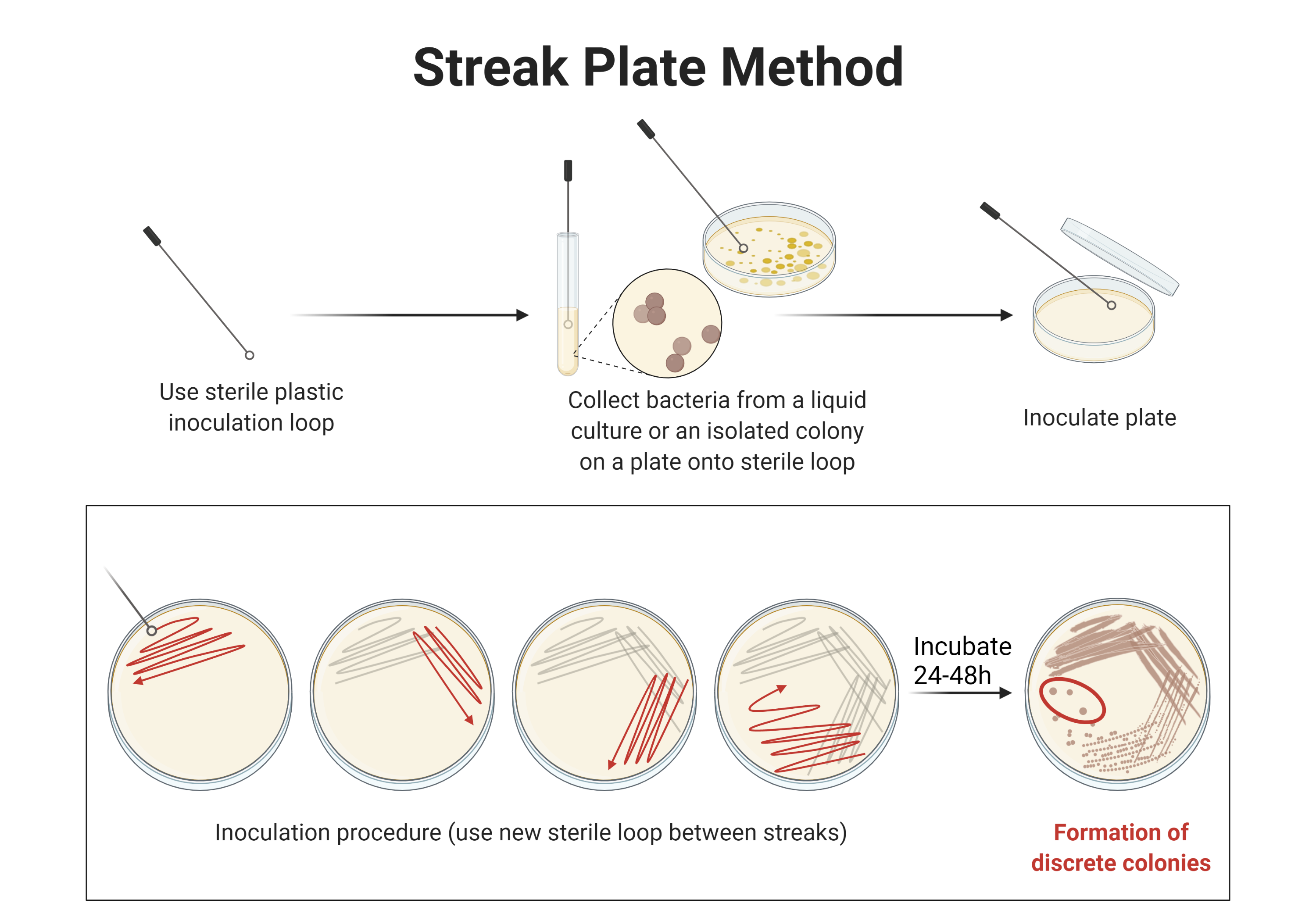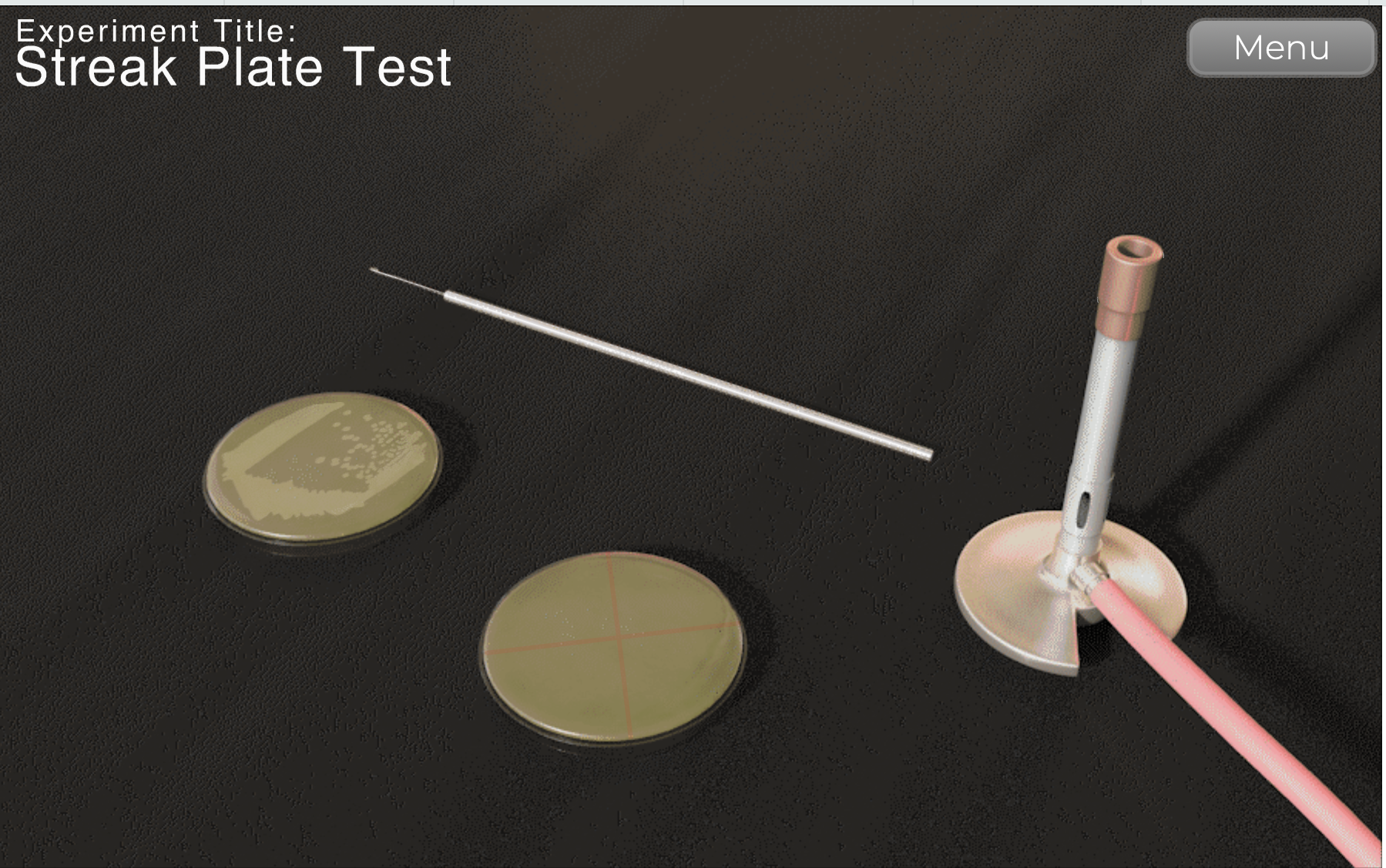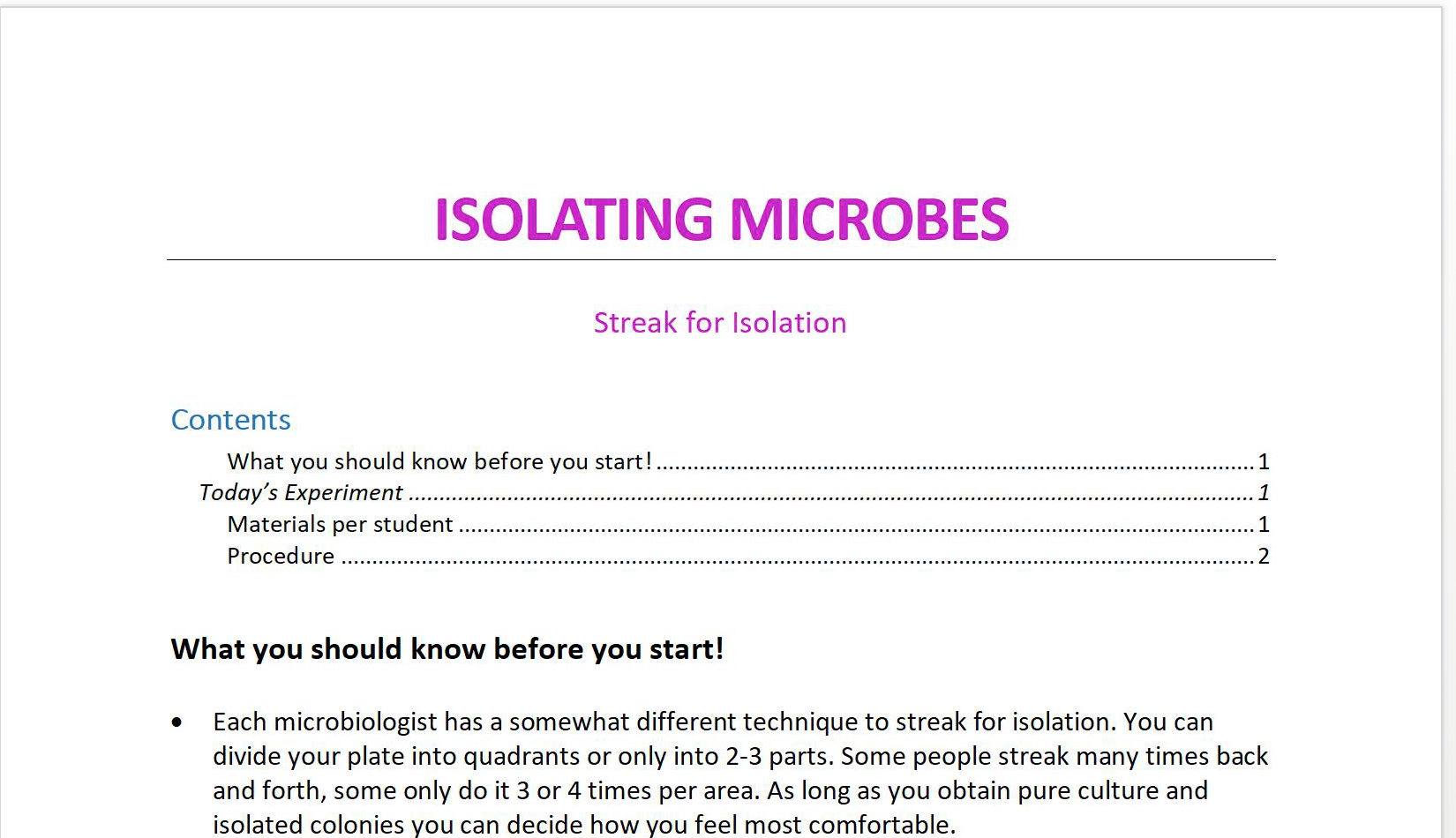Modules – Skills & Tools
Isolating Microbes
Background Information
WHY YOU SHOULD CARE ABOUT:
Producing a pure culture is one of the most important techniques of a microbiologist. Any identification and biochemical tests can only be performed on a pure culture. In the real world, clinical samples taken from a patient most often contain a mixture of organisms – it can be difficult to identify the real pathogen and subsequently implement the right treatment. Contamination of a pure culture in the research lab is common and you have to be able to re-purify the organism.
Access OpenStax: 15.2 How Pathogens Cause Disease
Identifying an Isolated Colony
When selecting a colony for streaking, make sure it is an isolated colony, meaning it is not contacting another nearby bacterial colony. This is important when streaking for isolation because you want to ensure you are only grabbing one type of bacteria.
Learning Objectives
After completing this module, students will be able to:
- Recall new vocabulary and definitions that pertain to this module.
- Use pure culture and selective techniques to enrich and isolate microorganisms.
- Aseptically transfer microbes between media and observe microbial growth in broths and on agar plates.
- Create and explain what a CFU is (colony forming unit).
- Recognize contamination and non-pure cultures on a plate.
History Connections
Virtual Lab Simulations
Online simulation of streak for isolation:
Practice streak for isolation online at the Virtual Interactive Bacteriology Laboratory. Take a screenshot and put the image of your authenticated streak into your ELN.
Online Lab
Activity: Perform Streaks for Isolation from Mixed Media
Lab Kit Materials for this Activity:
- TSA Plates (3x)
- Sterile Inoculating Loop
- 1 mL Eppendorf Tube with PBS
- Sharpie
- Plate with Mixed Culture (from Growing Microbes module)
- Bacterial Cultures
- E. Coli
- M. Luteus
- B. Subtilis
Video Tutorials
Creating a Mixed Culture
Streaking for Isolation
Procedure
Creating a Mixed Culture

- Label the bottom edge of your new TSA agar plate with your initials, date, media type (TSA) and title “Unknown Microbe”
- Label your Eppendorf tube with 1x PBS as “Mixed Culture”
- Using a sterile loop, aseptically grab a loopful of bacteria from your liquid E. coli bacterial culture and suspend it in your PBS Eppendorf tube.
- Repeat step 3 for B. Subtilis and M. Luteus so you have a mixed culture.
- Close the Eppendorf tube, invert, and shake to mix the cultures.
- Insert your loop into the liquid culture, then streak the agar plate using the streak-plate technique as demonstrated by the picture above and shown in the video procedures.
- Make sure you use a new sterile loop between each quadrant.
- Incubate the agar plate in an inverted position for 24 to 48 hours at room temperature.
- Take a picture once there is bacterial growth.
Continue Streaking for Isolation
- After your first streak has been incubated for 48 hours and the bacteria has had time to grow, you will need to restreak your unknown microbe onto a new TSA plate.
- Label a new TSA plate with the required information. (Step 1 above)
- Grab an isolated colony from your previous streak using a new inoculation loop.
- Streak the new agar plate using the same streaking technique as outlined above. Make sure to grab a new loop in between each streak.
- Incubate the agar plate in an inverted position for 24 to 48 hours at room temperature.
- Take a picture once there is bacterial growth.
- Repeat steps 1-6 on a new TSA plate to continue streaking for isolation.
- Make sure to perform at least 3 streaks for isolation, but continue streaking with the rest of the TSA plates provided until you are sure you have a pure culture. (Follow the video tutorial for more information about identifying a pure versus non-pure culture). Keep all old bacterial plates in the refrigerator to preserve while you are using them for this module.
- For extra practice in streaking, select a different bacterial colony from your initial mixed culture and perform new streaks for isolation using the TSA plates you made in Growing Microbes.
Results
Include the following in your ELN:
- Make sure you keep detailed notes of the culture, morphology, pigmentation and other characteristics of your unknown microbe in your ELN.
- Discuss why it is important and necessary to obtain a pure culture of bacteria, and how you can identify pure versus mixed cultures.
- Evaluate whether you were successful in isolation of your microbes after each streak is performed- is it a pure or mixed culture and why?
- Provide pictures of each TSA plate you streaked and describe the bacterial colonies.
- Why is it important to grab an isolated colony when streaking for isolation?
In-Person Lab
Isolating Microbes Procedure
Video Tutorials
Streak for Isolation
Identifying Pure versus Non-Pure Cultures
(Minute 54:25)
Results
Include the following information in your ELN:
- Make sure you keep detailed notes of your culture, morphology, pigmentationn etc., this is all part of your unknown project. Make sure you work with the same organism in EACH lab.
- So what- explain it to your friends – why is it important to obtain a pure culture?
- Look around your neighbors and see how their streak turned out. Evaluate the successful isolation of microbes (are there isolated colonies) and determine if they are pure cultures.
Submit your ELN according to your GTA’s instructions.
Resources
- Take a look at the appropriate module for the vocabulary that is being tested: Microbiology @ UF Lab Terminology Quizlet.
- JOVE Microbiology Education: Pure Cultures and Streak Plating: Isolation of Single Bacterial Colonies from a Mixed Sample..
REAL-WORLD APPLICATION
The method of producing a pure culture through the isolation of unique colonies is essential for any genetic work, identification purpose and other methods as it is assumed that each colony is of clonal origin, that means it originates from one cell and all cells in a colony are the same. This method is key to any microbiology related activity. World of caution, many organisms from the environment cannot be cultured as pure cultures as they depend on other organisms from the environment, which can be a big problem for understanding pathogenicity and develop treatment.
Case Study
For years researchers have been trying to grow the pathogen for citrus greening disease, a plant microbial pathogen that is destroying the citrus industry in Florida. Researchers found a novel way to culture the organism in a biofilm culture that will open the door to develop new treatments. Explore this article and see what hurdles they had to overcome to be able to isolate and grow this plant pathogen.




